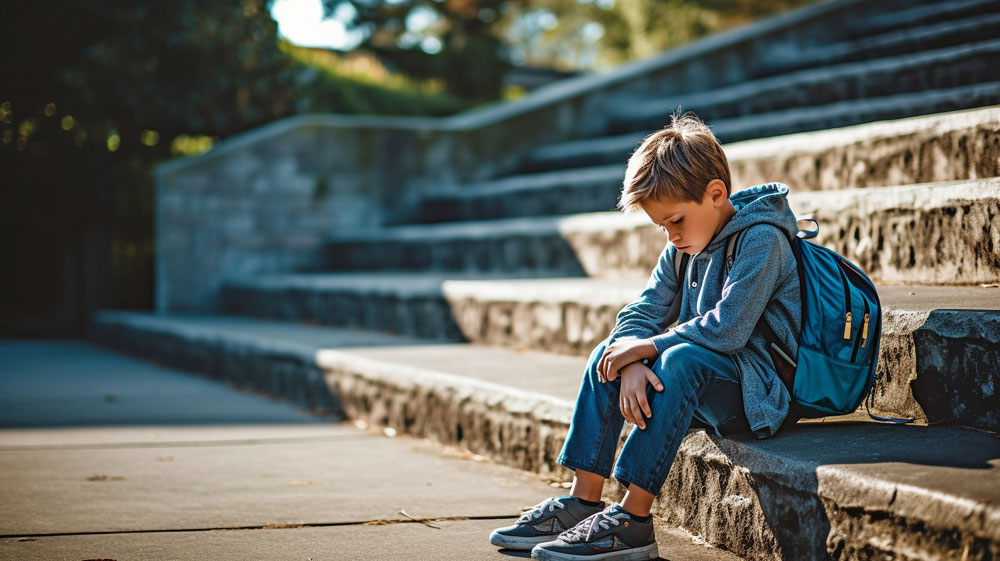Recent studies have shown that the effects of bullying still display themselves nearly 4 decades later. Childhood bullying contributes to the development of poor mental, physical, and socioeconomic conditions. It is has been reported that, at the age of 50, people who were bullied in their childhood are more likely to suffer from poorer physical and psychological health conditions and have worse quality of cognitive functioning than people who were not bullied. It is vital to distance oneself from any perception that bullying is just an inevitable part of growing up. There exists a constant tendency toward treating bullying as a rite of passage that would make slight of the abusive behavior that is going on. However, the truth of the matter is that addressing such behavior and eliminating or lessening the chances of its occurrence would not only lessen the risk of the development of mental health problems but would also act as a preventive measure against the ensuing socioeconomic and psychiatric problems that would otherwise prove costly to the community and society which is indirectly involved.
What Is Bullying?
Bullying is a form of peer victimization with a specific important feature, that is the power imbalance that makes it difficult for the victims to defend themselves. As an example, when two people who have the same level of physical strength quarrel it would not be considered bullying, however, it can still be called peer victimization. In a bullying incident, the victims are not likely to retaliate against the abusive behavior that they are subjected to by their peers. They form a heterogeneous and vulnerable group who due to their experience of being bullied, are susceptible to experiencing adversity, adjustment difficulties, or even mental health problems at some point in their lives.

Why Bullying Behaviors and Their Adverse Impacts Should Be Cut
- Bullying is common worldwide among children and adolescents. A study conducted in approximately 40 different countries showed that roughly 13% of 11-years-old children had been subjected to some format of bullying. Bullying victimization is more prevalent among boys and tends to decline with age. Bullying is the most prevalent form of abuse across all age groups, especially for children and adults who are up to 24 years old.
- Bullying is widespread across different environments including schools, neighborhoods, and at home.
- Bullying can occur across different times and settings. The studies conducted in the UK on the subject have confirmed bullying to be a rather persistent and reoccurring problem as 43% of the 11-year-old victims continued to be bullied 3 years later. Meaning that nearly half the children who were frequently bullied at a younger age were still suffering from their peers’ abusive behavior in secondary school.
- Bullying can take various forms. It can be verbal such as threatening, taunting, spreading rumors, or physical actions including pushing and kicking. It can be direct like verbal and physical behaviors conducted in the face-to-face interactions or indirect like actions that do not require the bullies and the victims to be present, such as spreading rumors and excluding others.
- Bullying has evolved with time. As with much else, bullying behavior has changed and adapted itself with the advancement of technology giving birth to phenomena such as cyberbullying that are primarily focused on emotional manipulation and damaging the victim’s reputation.
Adjustment Problems
Some of the common symptoms of being subjected to abusive behavior at school could include poor academic achievement, general unhappiness, and difficulty adjusting to the school setting. Besides, facing social problems like being isolated and feeling lonely, would result in anxiety that would itself cause distraction and an inability to concentrate that would hurt the child’s academic performance. Some temporary symptoms would also manifest among young victims that can recede with appropriate support. These symptoms include psychological distress which is displayed in the form of constant tearfulness or irritability, losing motivation, and experiencing sleep problems. There is also the risk of the development of some signs of psychological distress that are commonly associated with psychopathology. Studies have also stressed the increased risk of self-harm and suicidal ideation among bullied youths which goes in the way of emphasizing the importance of monitoring and eliminating such behavior and providing support for those who have already suffered such incidents.







